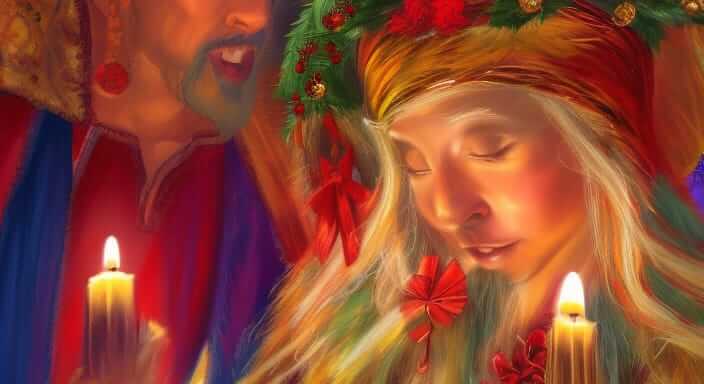Explore the rich traditions and customs surrounding Advent, the 12 Days of Christmas, and Candelaria. Learn about the preparation and anticipation leading up to Christmas, the festive period that follows, and the meaningful conclusion of the Christmas season.

Christmas is traditionally celebrated on December 25th each year. It is a Christian holiday that commemorates the birth of Jesus Christ. However, it’s worth noting that some Eastern Orthodox churches celebrate Christmas on January 7th due to differences in calendars. Additionally, Christmas has also become a cultural and commercial celebration observed by many people around the world, regardless of their religious beliefs, and the customs and traditions may vary from country to country.
Advent – The time before Christmas
Advent is the period of preparation and anticipation leading up to Christmas. It begins on the fourth Sunday before Christmas and lasts until Christmas Eve, which is December 24th. The exact dates of Advent may vary from year to year, depending on the placement of Sundays in the calendar.
During Advent, Christians engage in various practices and traditions to prepare spiritually for the celebration of Christmas. This includes lighting an Advent wreath, which typically consists of four candles representing the four weeks of Advent, with an additional candle being lit each week. Many people also follow an Advent calendar, which is a special calendar that counts down the days until Christmas, often with small treats or surprises behind each door or window.
The purpose of Advent is to reflect on the significance of the birth of Jesus Christ and to prepare one’s heart and mind to receive Him. It is a time of anticipation, hope, and joyful expectation as Christians await the celebration of Christ’s coming into the world.

After Christmas – The 12 days of Christmas and Epiphany
After Christmas Day, there is a period known as the “12 Days of Christmas.” This period begins on December 25th and concludes on January 5th, the day before Epiphany. The 12 Days of Christmas is a traditional Christian celebration that marks the time between Jesus’ birth and the arrival of the Magi, or the Three Wise Men, who visited the newborn Jesus in Bethlehem.
During the 12 Days of Christmas, different customs and traditions are observed in various cultures. In some places, it is common to exchange gifts and engage in festive activities throughout this period. Each day is associated with a particular significance or feast day. For example, December 26th is celebrated as the Feast of St. Stephen, and January 1st is the Feast of the Solemnity of Mary, Mother of God.
Epiphany, also known as Three Kings’ Day or the Feast of the Epiphany, marks the end of the Christmas season. It is celebrated on January 6th and commemorates the visit of the Magi to the baby Jesus. Epiphany is particularly significant in many countries and is often associated with various customs and traditions. In some cultures, it is traditional to exchange gifts on Epiphany, representing the gifts brought by the Magi.
Overall, the 12 Days of Christmas and Epiphany form an important part of the Christian celebration of the Christmas season, extending the joy and significance of Jesus’ birth beyond the single day of Christmas Day itself.

Candelaria – The End of Christmas
Candelaria, also known as Candlemas or the Feast of the Presentation of Jesus, is a Christian holiday that marks the end of the Christmas season. It is celebrated on February 2nd, forty days after Christmas.
Candelaria has its roots in the biblical account of Mary and Joseph presenting the baby Jesus at the Temple in Jerusalem, as described in the Gospel of Luke. According to Jewish law, a firstborn male child was to be presented at the Temple and dedicated to God. During this event, Jesus was recognized as the long-awaited Messiah by Simeon and Anna, two devout individuals who were present at the Temple.
On Candelaria, many Christian denominations hold special church services and processions. Candles play a significant role during the celebration, symbolizing Jesus as the light of the world. The candles are often blessed during the service, and in some traditions, the faithful carry lit candles in a procession.
In some cultures, Candelaria is associated with specific customs and traditions. For instance, in certain Latin American countries, it is common to bring candles to be blessed at the church, followed by festive gatherings and feasts with family and friends.
Candelaria serves as a significant moment in the liturgical calendar, concluding the Christmas season and transitioning into the next period of the Christian year.